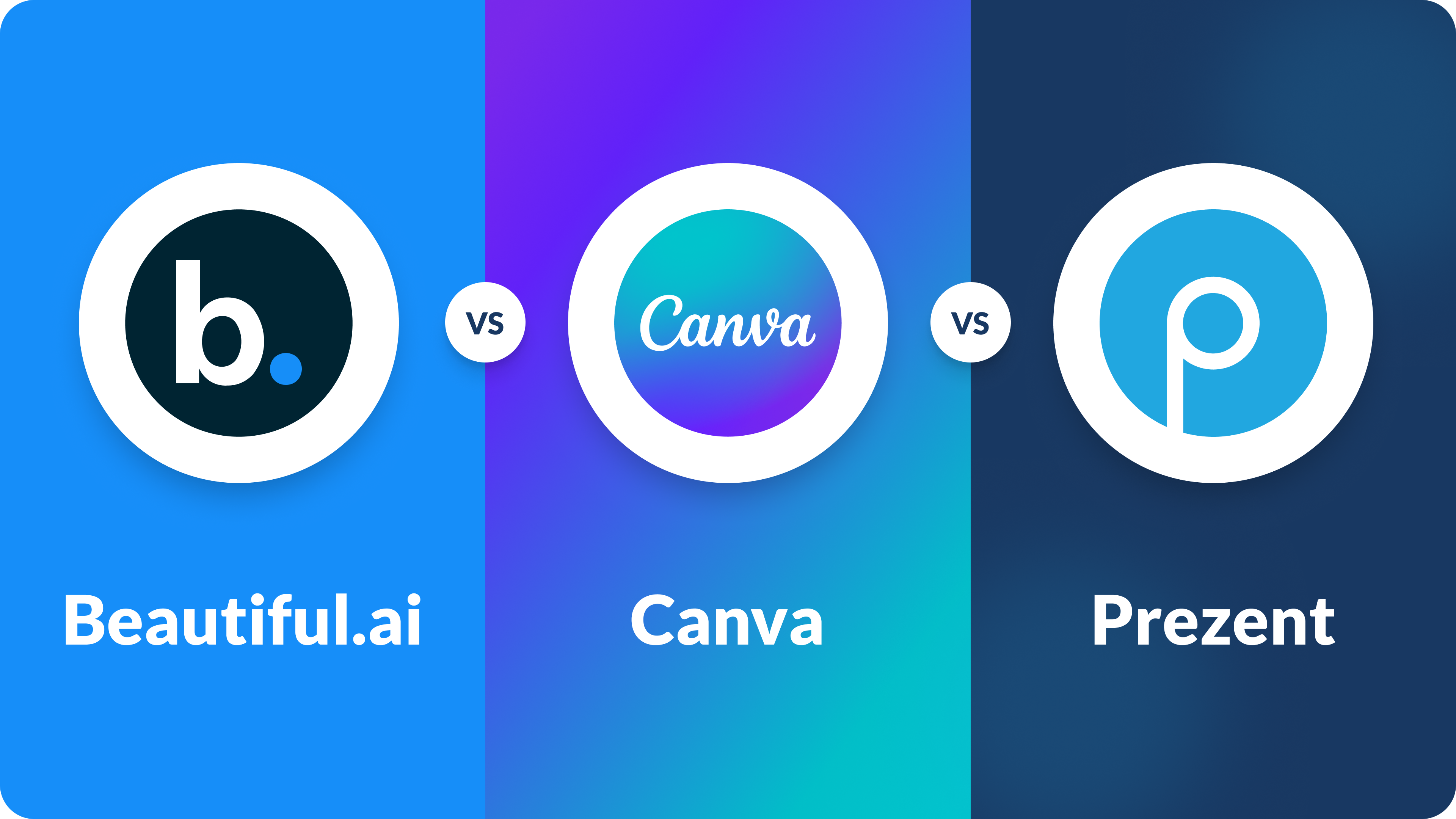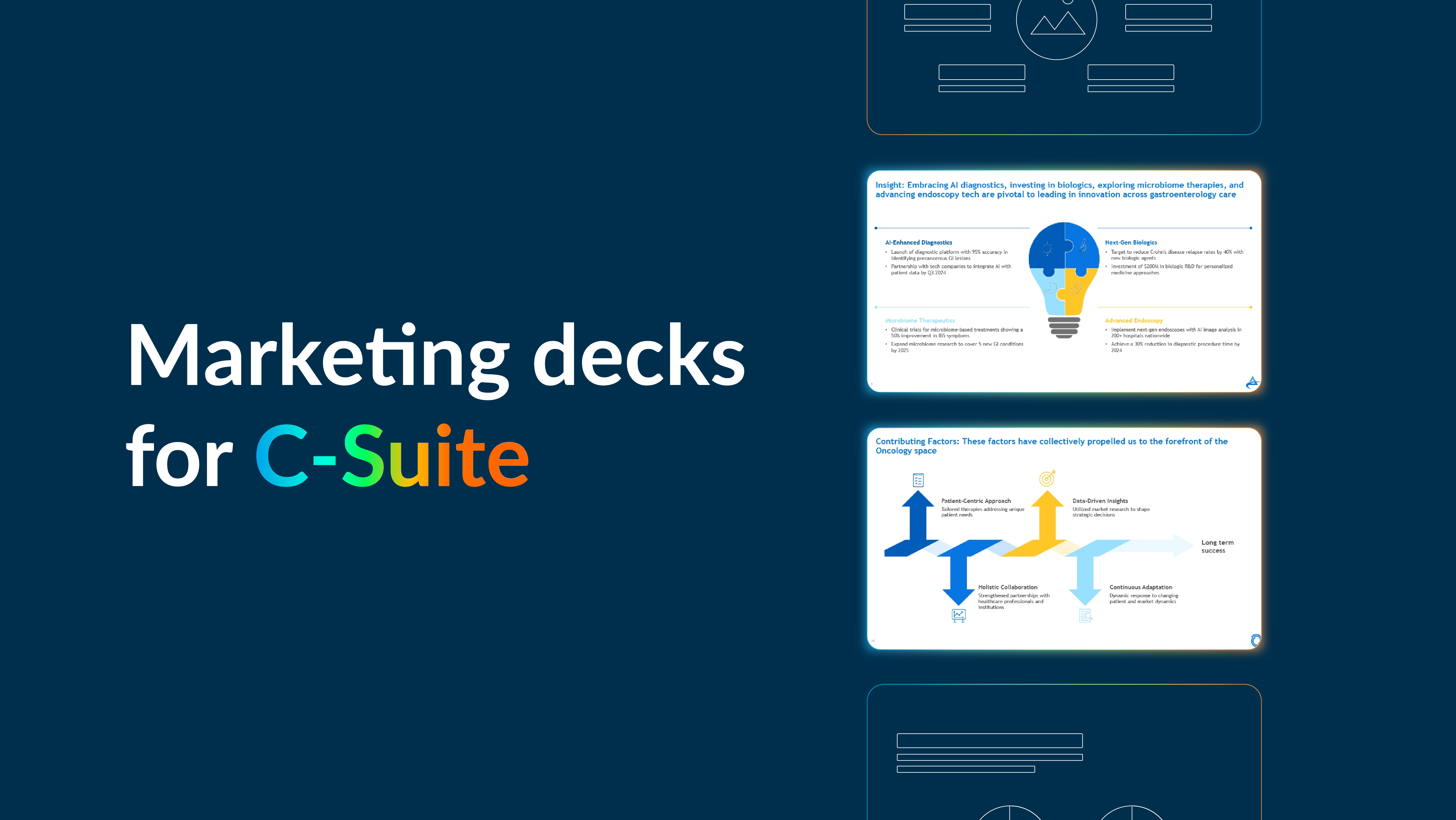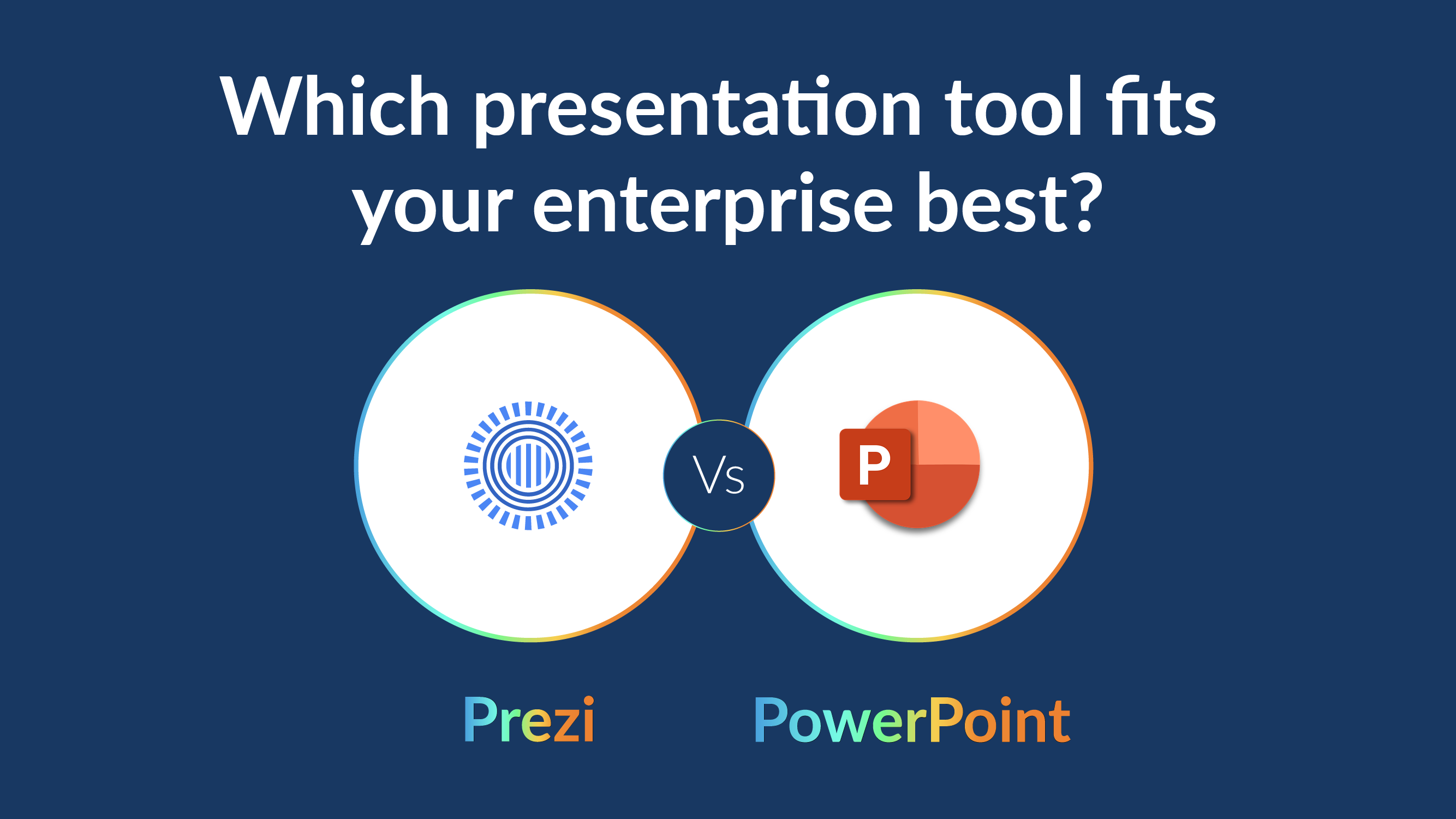How to build a winning pitch deck structure that investors want to see
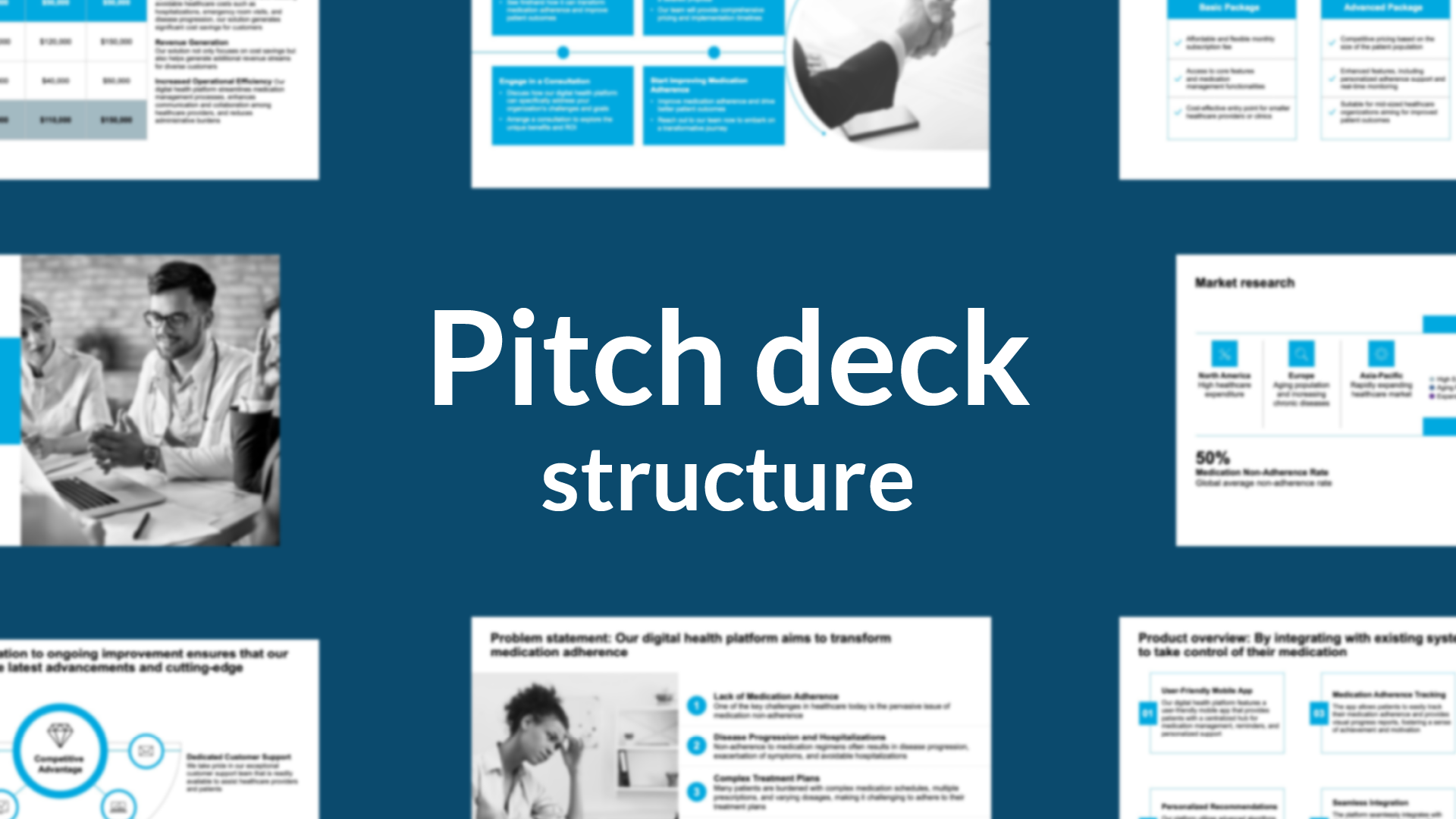
A great pitch deck comes down to three things: a solid product or idea, a compelling story, and a confident presenter who believes in what they’re pitching.
Securing investment is a game-changer. It gives you the runway to build, grow, and scale. But before you can get there, you need to grab investors' attention—and fast. That’s where a strong pitch deck structure comes in.
A well-structured pitch deck makes it easy for investors to understand your business, see what sets you apart, and recognize the market potential. Get it right, and you increase your chances of securing funding. Get it wrong, and you risk losing interest before you even make your case.
This guide breaks down the key slides, what investors want to see, and the biggest mistakes to avoid—so you can build a pitch deck that actually works. Let’s dive in.
What is a pitch deck and why does it matter?
A pitch deck is more than just a presentation—it’s your startup’s chance to make a strong first impression on potential investors. It tells the story of your vision, product, and business model in a way that’s clear, compelling, and investor-ready. When done right, it becomes a powerful tool for securing funding and driving growth.
Why do startups need a structured pitch deck?
The competition is intense. Every day, over 1,000 pitch decks are created, but only 1% actually secure funding. That means founders need more than just a great idea—they need a clear and concise pitch deck structure to stand out.
A well-structured pitch deck does four things:
- Clearly defines the problem you’re solving and why it matters.
- Showcases the market size and opportunity for growth.
- Demonstrates a solid business model and revenue strategy.
- Highlights key milestones and how your startup will scale over the next 18-24 months.
When investors see a pitch deck that is structured, easy to follow, and backed by data, they’re far more likely to take the next step.
Key elements of a successful pitch deck
Whether you're raising your first round or scaling up, your pitch deck needs to be backed by solid insights and a compelling narrative.
Here are the essential slides every successful pitch deck should include:
- Problem slide – Define the market gap and the pain points your startup is solving.
- Solution slide – Introduce your product or service and explain its unique value.
- Market opportunity slide – Show the size of the market and why it’s worth investing in.
- Traction slide – Provide proof of customer adoption, revenue growth, or key partnerships.
- Team slide – Highlight the leadership team and why they’re the right people to build this business.
A strong pitch deck structure:
A well-structured pitch deck helps investors absorb information quickly and make informed decisions. While it’s important to be clear and detailed, overloading your deck with too much information can cause investors to lose interest. The key is to strike a balance between clarity and conciseness to keep your audience engaged.
To achieve this, focus on three key factors:
- Number of slides – Keep it concise while covering all essential points.
- Compelling storyline – Ensure your pitch flows logically and keeps investors engaged.
- Logical structure – Present information in a way that’s easy to follow and digest.
The ideal number of slides for a pitch deck:
The ideal number of slides varies based on industry and product, but your pitch should be complete within 20 minutes. That means covering the problem, solution, market opportunity, revenue growth, and team—without unnecessary fluff.
Marketing expert Guy Kawasaki’s 10/20/30 Rule offers a simple guideline:
- 10 slides max – Cover only the most critical information.
- 20-minute presentation – Keep it short and to the point.
- 30-point font – Avoid cluttered slides and make content easy to read.
The role of storytelling in investor pitches:
A compelling pitch deck should take your audience on a journey, helping them understand why your startup exists, how it solves a problem, and why it’s positioned to win.
Think of your pitch like a great movie—it should create excitement, build anticipation, and leave a lasting impact. The goal is to make investors feel emotionally connected to your vision.
A strong pitch deck follows a simple storytelling structure:
- The Beginning – Set the stage by introducing your product and providing context. Help investors relate to the problem you’re solving.
- The Middle – Introduce the hero—your product. Show how it effectively addresses market challenges, stands out from the competition, and has strong growth potential.
- The End – Bring it all together by highlighting your team’s strengths, your vision for the future, and the investment opportunity. Make a clear and compelling ask.
By structuring your pitch like a story, you create a narrative that captures attention, builds trust, and keeps investors engaged—making them more likely to believe in your success.

An example of a pitch deck structure:
Many entrepreneurs fail to secure funding not because their idea lacks potential, but because their pitch lacks structure. Investors need a clear, logical flow that guides them from problem identification to growth potential, making it easy to see why your startup is worth betting on.
A well-structured pitch deck should include:
- Introduction Slide – Introduce your startup with a short, engaging tagline.
- Problem Slide – Define the market need and the pain points you’re solving.
- Solution Slide – Show how your product or service effectively addresses the problem.
- Market Opportunity – Break down the total addressable market (TAM), serviceable available market (SAM), and serviceable obtainable market (SOM).
- Business Model – Explain how your company generates revenue.
- Traction- Highlight key growth metrics, customer acquisition, and early wins.
- Competitive Landscape – Position your startup against competitors and highlight your unique edge.
- Financial Projections – Show funding requirements, expected revenue, and how you’ll allocate resources.
- Team Slide – Introduce key team members and their expertise.
- Closing Slide – Reinforce your ask and encourage a follow-up conversation.
Dive into each slide with this comprehensive guide and get practical tips to raise funding successfully.
What is a pitch deck: A guide for entrepreneurs with expert tips and template example
Investor pitch deck template for VC funding:
Creating a successful startup pitch deck isn’t just about presenting information—it’s about telling a story that builds excitement and convinces venture capitalists (VCs) that your business is worth investing in. But crafting a compelling pitch deck is a presentation challenge that often requires endless revisions, manual formatting, and ensuring brand consistency.
To assist you in the fundraising the process, we’ve put together an expert-curated investor pitch deck template. Designed with a logical roadmap, structured storytelling, and polished deck design, it covers all the essential slides VC firms expect—from your value proposition and financials to your growth plan and marketing efforts.
You can use this presentation template as a guide or download it directly to save time. Instead of spending hours tweaking slides, focus on what really matters: making your pitch memorable, showing investors and partners why your startup stands out, and raising money that you need to scale.
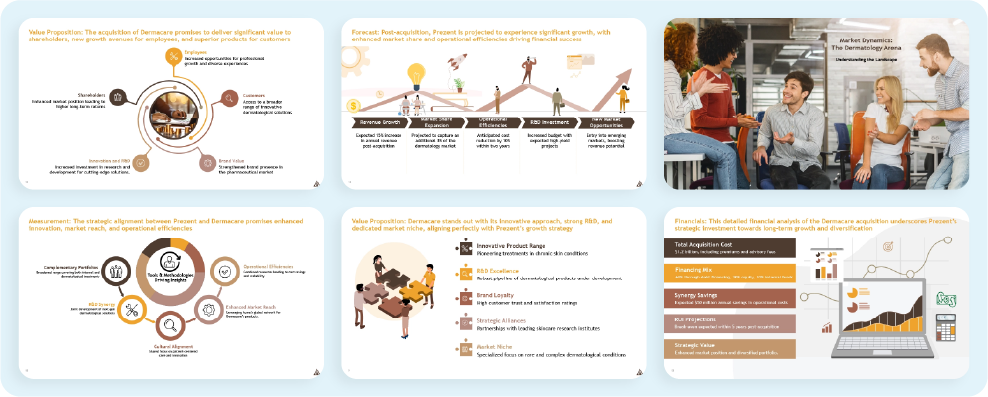
Common mistakes to avoid in your pitch deck
Raising money is never easy, even for seasoned entrepreneurs. Many pitch decks fail to capture investor attention due to avoidable mistakes that weaken their impact. Here are three critical pitfalls to steer clear of when crafting your investor pitch deck:
1. Overloading slides with too much information
Investors want to see a clear, compelling story—not a data dump. A pitch deck cluttered with excessive text, unnecessary screenshots, or dense financials can dilute your message. Keep your deck concise, focusing on key points that highlight your unique value proposition and growth plan.
2. Ignoring design and visual appeal
Your pitch deck structure should be visually engaging, not distracting. A poorly designed deck can be a red flag for VC firms, signaling a lack of attention to detail. Use high-quality visuals, clear fonts, and a consistent color scheme to maintain a polished, professional look.
3. Failing to highlight the business model or market opportunity
A successful startup pitch deck clearly outlines how the business generates revenue and scales. Investors expect to see your business plan, market size, and competitive edge. Overlooking these key elements can weaken your pitch and make it harder to secure a follow-up meeting.
Conclusion:
A strong pitch deck tells a compelling story while staying concise, visually engaging, and strategically structured. But while defining these elements is easy, bringing them to life can be a real challenge.
That’s where Prezent makes a difference—helping you create investor pitches, sales pitches, and product pitches 90% faster so you can focus on growing your business and executing your next big strategy.
With Prezent, your team gets access to:
- 35,000+ expert-curated slide templates
- 1,000+ business storylines for impactful storytelling
- AI-powered auto-generation for effortless presentation creation
- 1-click brand consistency to align with your company’s identity
- Industry best practices built into every presentation
Ready to transform the way you pitch? Book a demo or start your free trial today and experience the power of Prezent firsthand.



.avif)



